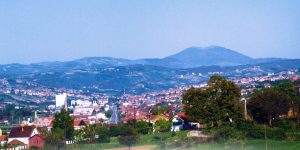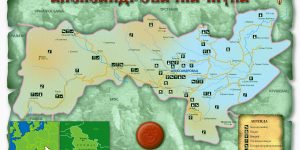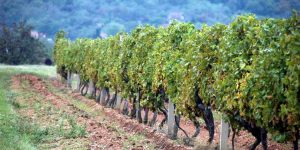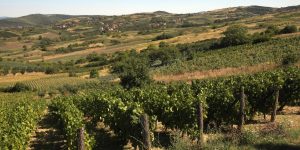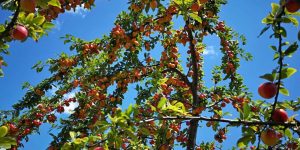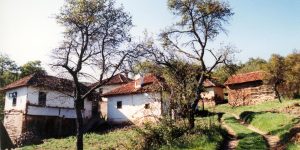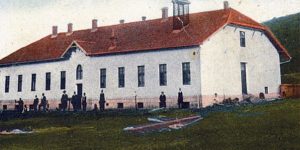





History of Župa
Župa, with Aleksandrovac in it’s center, has an extremely favorable geographical position. It is naturally well connected with the valleys of Morava, Ibar and Toplica. Župa itself is intersected by three valleys: Rakljanska, Kožetinska and Ražanička, named after the streams that flow through them.
Geographic location and climatic conditions are decisive factors for the development of specific flora and fauna in Župa. That’s why Župa is a traditional land of Serbian wine culture, wine making and fruit growing.
Today, grapes are planted on over 2500 hectares of land . The most grown are the old Serbian varieties Stari Rskavac and Tamjanika. There are also plantations of Župski bojadiser, Smederevka, Cabernet Sauvignon, Merlot, Semillon, Župljanka, Neoplanta, Chardonnay, Italian Riesling, Syrah.
Kad je bog vina, digao Prvu kupu
Nad brdom i poljem, nad gorom i vodom,
Blagosiljao je miljenicu Župu,
Vinovom lozom i Vrednim narodom.
Od tada, ko zna koliko vekova,
Kupa se Župa u ruju i plaveti,
A žuljevima ruka čovekova,
Gaji najbolju Lozu na planeti.
A ko se venča s’Gidžom i pričesti
Plavim kamenom i Rumenim vinom,
Taj se nikada neće postideti,
Ni pred Nevestom, ni pred Otadžbinom.
Dobrica Erić
Archeological sites
In Župa, life goes from prehistoric times, through ancient times, middle ages to the present.
The Neolithic site in Vitkovo village, near Aleksandrovac with size of 100 hectars (protected by state) and its topographic location is an exceptional phenomenon which will certainly cast a new light on this period in prehistory and Neolithic culture.
,,Lady of Aleksandrovac” is the largest and most beautiful anthropomorphic figure known today and it represents a masterpiece made by the first farmers who lived in this region. It has been exhibited in several museums around the world and it is now part of archeological literature along with ,,Venus of Župa”, ,,Lady of Vitkovo” and ,,Lady of Venčac”.
At the beginning of the next historical epoch, Župa was an area where the civilizations of Illyrians, Thracians, Dardanians and Celts met. In the 29 BC this territory fell under Rome’s rule.
The first written records about Župa date from the late 12th century. Veliki Župan Stefan Nemanja, the founder of Serbian medieval state, donated several villages from this area to Studenica monastery.
In the charter, from 1196. following villages were given to Studenica Monastery: Popovci, Kožetin, Raklja, Velika Kruševic and its cellars, with the obligation to provide wine necessary for the Monastery.
Knez Lazar also had cellars in Župa, in Kruševica. Legend has it that Serbian warriors before Battle of Kosovo took Holy Communion with red wine from Župa.
„I knez je Lazar ovde bio,
voleo župske blage kose,
sa izvora njenih vino je pio,
bistro ko kapi rose“.
Milosav Buca Mirković
Development of wine growing and winemaking in Župa through the centuries
By falling into Turkish slavery, people in Župa didn’t cease to produce grapes and wines. Although production was decreased, the people were obligated to give ten in wine to Turks.
After being liberated from Turks in 1833, viticulture again took great turns. Unfortunately, from 1882 to 1886, vineyards in Župa were completely ravaged by phylloxera. The restoration of vineyards was however quick and effective thanks to the help of state and the state founded nursery in 1891. In just one decade, Župa had restored its vineyards and enriched them with new varieties on more resistant soil.
French consul Deko was fascinated by Župa’s appearance as land of grape and wine, so he enthusiastically stated that Župa is Serbian Champagne.
The monuments of winemaking and viticulture in Župa are the so-called ,,Poljane”. They are the settlements located in wineyards where tenants lived during the time of the wineyard works.
Wine cellars were also built there, wines made and prepared for the delivery to the market.
Most of the ,,Poljana” are today state-protected cultural and historical monuments. The most significant are Crvena Jabuka, Pokrep…
During the WWI, a number of Župa residents, after crossing the Albanian mountains, spent a couple of years healing in France, while also improving their viticulture and winemaking skills. After the war, upon return to Župa, they had applied the acquired knowledge in winemaking and viticulture. The descendants of those winemakers are today families who produce high quality brandy and wine. Between the two wars, large wine merchants also emerge, building modern wine cellars and selling wine from Župa worldwide.
After the WWII agricultural cooperatives were formed in Župa, whose main activity was viticulture and winemaking. From such long and rich tradition of viticulture and winemaking „Vino Župa” was founded.
Župskoj Ružici,
Dok je gledam
Kao da ne diše,
Kad je ljuljam
Ona mene njiše,
Dok je ljubim,
Žari mi obraze,
Zlatnim sjajem
nadima mi grudi,
Plamenom mi
Širi Horizonte,
Mirisom mi zove prijatelje
Živa zvona postaju damari
Rujem kvasi rasušena usta,
San me hvata, al’ mu Sunce neda,
Vaseljena spava mi u duši.
Usne greju Lunine puteve,
Ceo Svet se gleda u oknima,
Praznici mi na prozore sleću!
A nje, nema, nestala je,
Njenom purpurnom lepotom
bojim moje zaludne i nevidne noći.
Rasipam trag njene svetlosti a
znam da sam sa njom noćas brazdio
moju bremenitu sunčanu Župu.
Gospode, vadi dušu,
jer đavoli već nose moje telo!
Ma nalijte mi još čašu, jednu,
Jer ne znam kad ću ponovo da snevam!
Hadži Radomir Grešni

